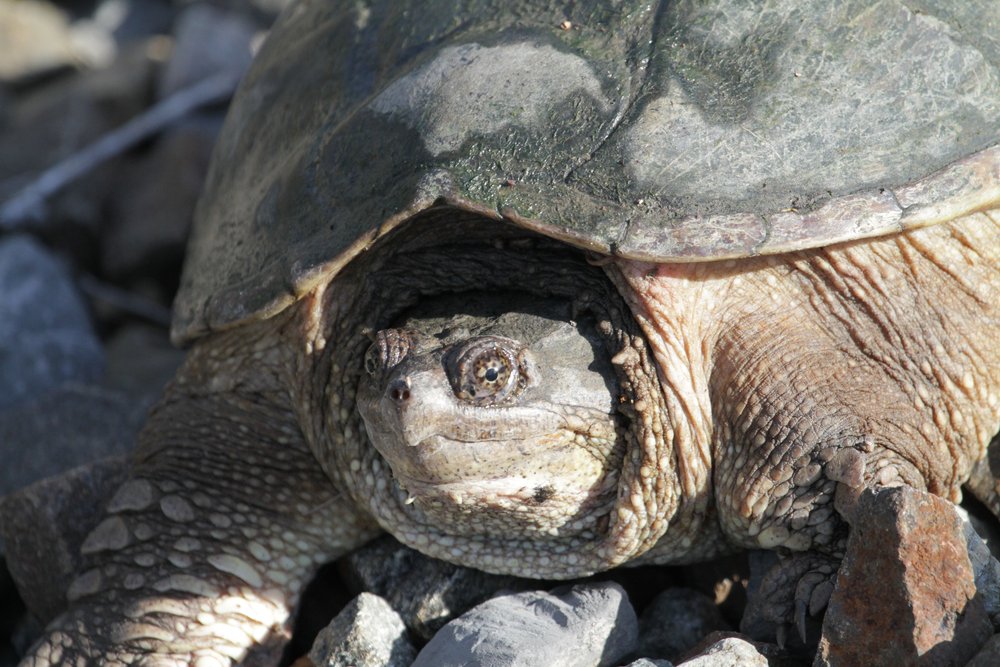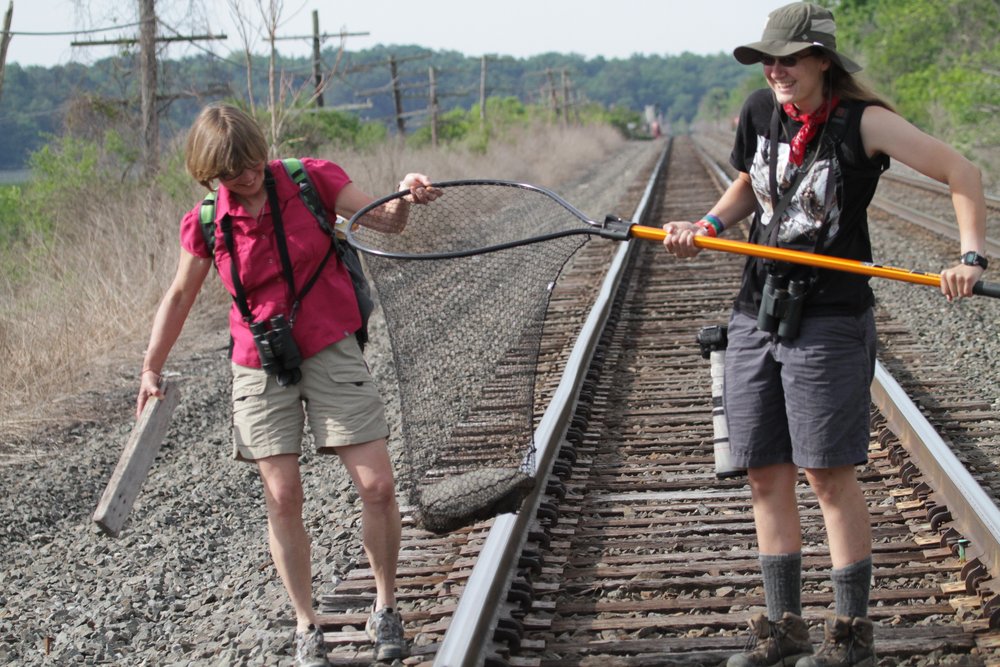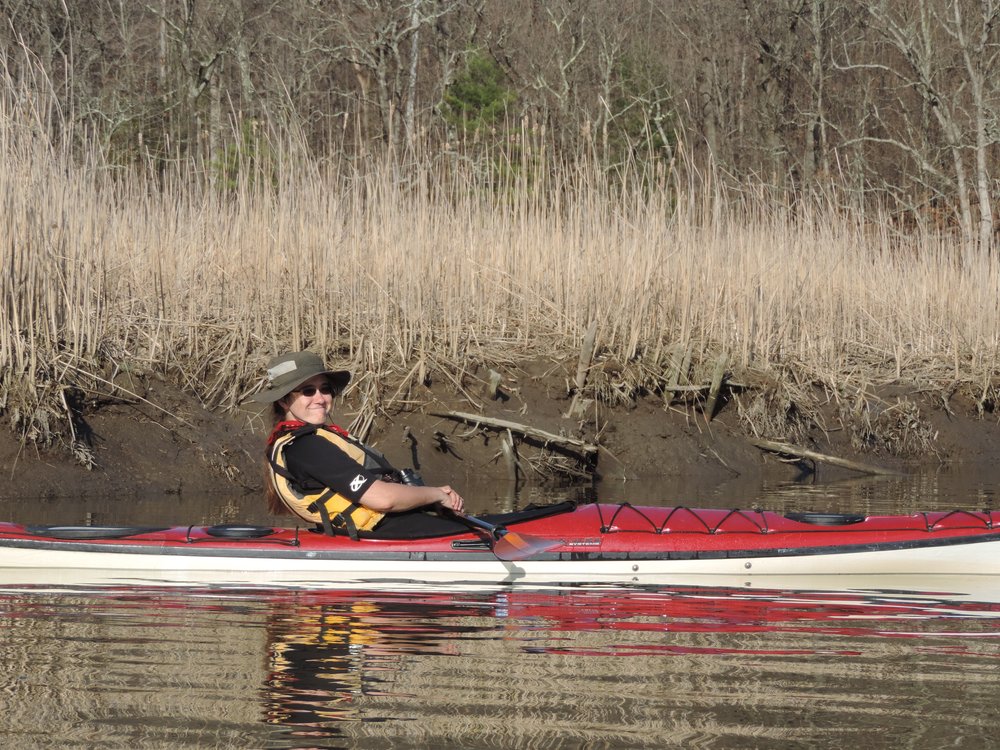Dead Bird
The river was windy last night. Both current and wind were against me as I shoved south in my kayak on the Hudson River. To the side, I saw a lump in the water. I assumed it was a fish, and was hesitant to pull near—marinating fish is not a smell I enjoy. But the shape was not entirely fish-like, so curiosity won out. What I found floating in the water was a gull, its bill hooked through the slit-like nares, by a fishing lure, and the web of its feet hooked by the other end of the lure. It was clear what had happened: the bird had come down to the shiny object expecting a fish meal, was caught through its bill and, in trying to liberate itself with is feet, entangled itself further. The lure hooked the bird to itself, bill and feet joined to shape the bird into a circle. It then plunged into the water and drowned. Not too long ago. The body was soft in my hands, and the feathers intact.

The river was windy last night. Both current and wind were against me as I shoved south in my kayak on the Hudson River. To the side, I saw a lump in the water. I assumed it was a fish, and was hesitant to pull near—marinating fish is not a smell I enjoy. But the shape was not entirely fish-like, so curiosity won out. What I found floating in the water was a gull, its bill hooked through the slit-like nares, by a fishing lure, and the web of its feet hooked by the other end of the lure. It was clear what had happened: the bird had come down to the shiny object expecting a fish meal, was caught through its bill and, in trying to liberate itself with is feet, entangled itself further. The lure hooked the bird to itself, bill and feet joined to shape the bird into a circle. It then plunged into the water and drowned. Not too long ago. The body was soft in my hands, and the feathers intact.

As I held the bird, I said out loud: I hate people. I don’t actually. But I hate the carelessness of people, how someone had let this lure go. I transported the bird to a place where I could liberate it from the lure, then I unceremoniously dumped it in the water—a meal for a snapping turtle, perhaps. I watched the limp bird float off and let the mixture of sadness and outrage play through me.
This hook was just one of the ways that we make life for birds an obstacle course. Four of the top killers are these:
Glass. The Toronto-based organization FLAP—Fatal Light Awareness Program—estimates that every year 100 million to 1 billion birds are killed colliding with windows.
Wind turbines. Wind farms kill about 572,000 birds a year.
Cats. A 2013 study estimates that cats, both domestic and feral, kill 1.4 to 3.7 billion birds a year.
Planes. “Avian ingestion” or BASH—Bird Aircraft Strike Hazard—forces one plane a day to land; the cost to the industry is in the millions. But the cost to the birds? It’s hard not to fall into a feathered hopelessness.

When a bird is killed by a window strike, a feral cat, a wind turbine or an airplane it is absurd. Their natural lives—finding a meal, and staying safe from natural predators—are challenging enough. And perhaps the greatest challenge for a bird is migration. Many end up with tattered wings, and bodies that weigh half as much as when the bird started out.
The ludicrousness of a bird dying by colliding with a window, or electrocuted on a wire, or snagged on a fishing lure is hard to describe. But since I have been reading pages of Arctic and Antarctic literature this summer, this is the analogy I can make. Let’s take the Norwegian polar explorer Roald Amundsen who was the first man to sledge his way to the South Pole, most likely the first to fly over the North Pole (in a dirigible), the first through the Northwest Passage, and the second through the Northeast Passage. He is the Arctic Tern of polar explorers. Now, imagine that he has just returned from the South Pole and he stops at the local grocery store to buy some food—perhaps the lettuce he missed after three years of polar mush. And as he walks back to his car, he is crushed and killed by a car backing out of the parking lot. It is that absurd for this bird to have been killed by a fishing line.
August 24, 2014 in Birds, Environmental Issues, Hudson River, Kayaking
Snapping Turtle Tradition

I prepared for snapping turtle week by buying a fishing net. As I left Gander Mountain someone called to me: “butterflies?”—those would be some butterflies!
“Nope, Snapping turtles,” I called back, cheerful.
He rolled his eyes.

I prepared for snapping turtle week by buying a fishing net. As I left Gander Mountain someone called to me: “butterflies?”—those would be some butterflies!
“Nope, Snapping turtles,” I called back, cheerful.
He rolled his eyes.
 my finest rescue techniqueBecause snappers travel to lay their eggs, they cross roads and railroad tracks—and often are crushed. Already I had clumsily shoved a turtle across a road, the turtle snapping, four or five of us offering suggestions, stopping or slowing cars, and from time to time screaming in surprise when the turtle lunged with a snap. The net was the solution to all of my turtle rescuing problems.
my finest rescue techniqueBecause snappers travel to lay their eggs, they cross roads and railroad tracks—and often are crushed. Already I had clumsily shoved a turtle across a road, the turtle snapping, four or five of us offering suggestions, stopping or slowing cars, and from time to time screaming in surprise when the turtle lunged with a snap. The net was the solution to all of my turtle rescuing problems.
Last year, I stumbled on the maternity ward of snappers along the train tracks that slice the North Tivoli Bay from the main artery of the Hudson River. There, in the black gravel laid as foundation for the tracks the snapping turtles can easily dig, then the sun warms the eggs beautifully. On June 6 of last year, I saw dozens of turtles digging, and rescued one caught between the rails. The next day, dozens of turtles lay crushed, mangled by the trains barreling north and south. This year, I was going to save as many turtles as possible.


Further up the track it was a regular egg laying fest. Over twenty nests had been dug and raided—no doubt by raccoons. Shreds of the eggs littered the disturbed holes, the white so white against the black soil. But over a dozen lady snappers were still in holes, quietly laying their round, white eggs. Three had gathered near to each other, hind ends burrowed deep in the soil. When we returned half an hour later, one was gone—and her nest already empty. How quickly the thief works!
And yet--though the raccoon was hard at work, we saw no turtles crushed by the steel wheels of the train. This, a small relief.
We stopped for tea and sticky buns brought by Kate from the Tivoli Bakery—for any tradition to be a success, good food is essential—and watched barn swallows wing in and out under the underpass.

Does saving two snapping turtles make a difference? Maybe, but maybe not. It is comforting but naïve to think that every little bit helps—because in the face of our environmental problems this doesn’t even register. What matters, though, is that saving these turtles is what I can do, it’s what I do. It’s one of my traditions.
Baby Beaver



In the distance, I saw the tell-tale V of a beaver plowing through the water. In 1840, the beaver was a rare animal in New York State. Trapping had all but wiped out this large rodent, whose pelts were used for hats and coats. When trapping was finally prohibited in 1895, some claim there were but 10 left in the State. In the North Tivoli Bay, it is hard to believe this desperate history: I always see a beaver. Or rather, I hear a slap of a broad tail, signaling danger before the beaver dives below the surface.
I guessed it was lost. Across the channel rested a stick pile, a beaver lodge. I moved my boat to the middle of the channel thinking the little beaver might swim to me once again and this would get it closer to home. It did. And I had the foresight to turn on the video in my pocket camera. And sure enough, after it rounded the stern of my boat, the baby beaver swam off toward the lodge. Watch the video here.
Full of optimism, I paddled home.
Back on the water, 2014

Four of us carted our kayaks down the wooden stairs at the North Tivoli Bay launch at noon. Sun, blue sky, a light breeze had taken over. We eased our wetsuit-cloaked bodies into our sleek boats and pushed off. It seemed so normal. And yet but two months ago we were walking this same spot on ice, hefting through snow that reached to our thighs. Now it was all liquid and freedom. To paddle out, under the railroad trestle onto the Hudson River, cold and brown, wide and empty. We skirted the eastern shore, trailing the rip rap, and the still bare trees; the wake of a tug and barge knocked us around a bit. Then we popped back into the bay through a southern passage.

Four of us carted our kayaks down the wooden stairs at the North Tivoli Bay launch at noon. Sun, blue sky, a light breeze had taken over. We eased our wetsuit-cloaked bodies into our sleek boats and pushed off. It seemed so normal. And yet but two months ago we were walking this same spot on ice, hefting through snow that reached to our thighs. Now it was all liquid and freedom. To paddle out, under the railroad trestle onto the Hudson River, cold and brown, wide and empty. We skirted the eastern shore, trailing the rip rap, and the still bare trees; the wake of a tug and barge knocked us around a bit. Then we popped back into the bay through a southern passage.

“Let’s see an osprey, a long tailed duck,” Christina said. "And a smew."
I nodded. The osprey was possible. As for the duck, less likely. I didn’t even know what a smew looked like but Christina had been clamoring for one for the past few weeks. (A smew is a dashing looking Eurasian black and white merganser, and a rare visitor to the western Aleutian islands of Alaska).
It is a treat to look for birds with someone more optimistic than I am. “Let’s go find that smew,” I said as we gathered to paddle across the river. The Hudson felt bare, exposed without green to rim the shoreline and boats purring north and south. We spied a few other kayaks but otherwise, it was us, the outgoing tide, and a few spring logs floating south.

North, we found green-winged teal on the shoreline, a few common mergansers floating nearby and bufflehead out in deeper water. I looked up to see an osprey flying over, the crooked wings distinctive.
“There’s your osprey,” I called to Christina. Sometimes I believe that if you wish hard enough to see a bird, it will appear. Was the smew next? No, what was next, was a one boat parade coming from the south. The unbalanced, brightly colored ship is a replica of the Half Moon, the ship Henry Hudson sailed in 1609. When I think of Hudson I don’t usually have kind thoughts, but looking at this squat ship, I scrolled back to imagine the courage, perhaps folly it took to embark on these early voyages.
 “And remember, no gps system or maps, just the moon and stars and a sextant and vast oceans of doubt and wonder,” I said to my travel mates.
“And remember, no gps system or maps, just the moon and stars and a sextant and vast oceans of doubt and wonder,” I said to my travel mates.
Once back in the North Bay, tired and happy from the sun and the movement, we moved slowly, chasing two disgruntled Canada geese. A barred owl hooted from the woods, an early evening call. I spied a lump in the mud--it was now low tide. The shape was odd enough that I stopped to look. Sure enough, the mud lump had two eyes, nostrils. My first snapper of the season. Soon, it squished its head below the surface.
No smew, but a duck in the fog and a snapper in the mud. A river to paddle and friends to paddle with.

